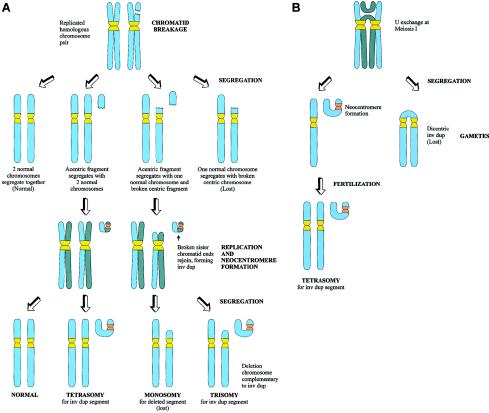Figure 4.
Possible mechanisms of formation of neocentric inverted duplication (“inv dup”) marker chromosomes. A, Formation at mitosis. Chromatid breakage is followed by segregation of the acentric fragment and the centric fragment (or deletion chromosome). Following replication, the broken sister chromosome ends of the acentric fragment join to form a mirror image inv dup chromosome, with neocentromere formation occurring on one of the two arms of the inv dup. The centric fragment will usually be lost because of instability; however, stabilization of the broken end of the fragment will occasionally allow the fragment to survive. Segregation of the inv dup with the centric fragment will lead to trisomy for the chromosome segment involved, whereas, if the inv dup segregates with two normal chromosome homologues, tetrasomy will result. B, Formation at meiosis. Formation of an acentric inv dup fragment occurs because of anomalous crossing-over during meiosis I. After segregation, the dicentric fragment will be lost, but the acentric fragment may be “rescued” by neocentromere formation. After fertilization, zygotes containing the inv dup will be tetrasomic for the segment involved in the inv dup.

